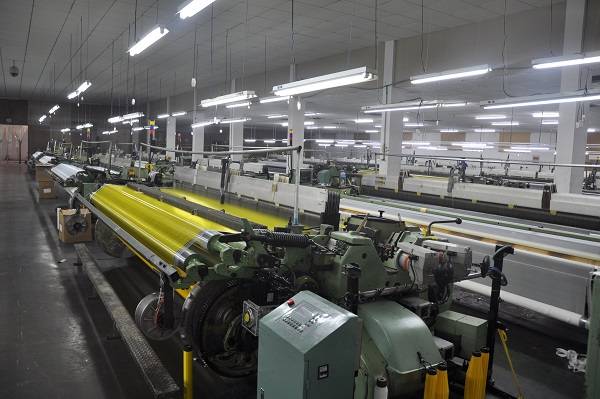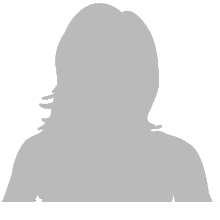Company Blog
Products for Filtration, Separation, Sifting and Printing
SCREEN MATERIALS AND PREPARATION OVERVIEW
- Font size: Larger Smaller
- Hits: 10472
- Subscribe to this entry
- Bookmark

Frames
There are two types of screen frames, metal and wood. Metal frames, both static (solid) and retentionable, have become the industry standard. Retentionables do not require the use of adhesive products.
Metal frames have been replaced by wood because they do not warp from water like wood frames do. The most commonly used types of wood are cedar and pine. Pine is preferred because it is more water resistant while it is light weight.
Metal screens are made out of aluminum or steel. Aluminum is commonly preferred because it is light weight, yet sturdy. There are some applications where steel is preferred such as very large printing frames used for long printing runs.
Fabric
Screen making - there are two types of threads for screen fabric:
- Monofilament - single strands weaved into fabric
- primarily used in commercial printing and other applications
- Advantage: Monofilament is easier to clean than multifilament
- Multifilament - multiple strands wound together like a rope, then weaved into fabric
- primarily used in textile printing.
- Disadvantage: ink tends to build up on screen, more difficult to clean Monofilament mesh has become the industry standard
Fabric Types
Today commercial screen printing primarily uses 4 types of fabric for making screens, silk, cotton organdie, nylon, and polyester. Silk was the original material used to make screens for screen printing. By far the most widely used fabric is monofilament polyester followed by multifilament polyester and nylon.
- Silk - multifilament weave
- loses taughtness with frequent use
- reclaiming chemicals containing bleach or chlorinated solvents destroy the silk
- today silk is primarily used for printing art, not commercial use as before
- Cotton Organdie - multifilament weave
- same disadvantages as silk
- Nylon - multifilament or monofilament
- good for stretching
- compared to polyester, lacks stability
- less rigid than polyester
- unsuitable for closely registered colors
- Polyester - multifilament or monofilament (calendared monofilament polyester, metallized monofilament polyester)
- primary material used in commercial screen printing
- Polyester is strong and stable when stretched
- Other screen materials - carbonized polyester
- glass
- wire mesh
- stainless steel
Screens made of the same material can differ in thread diameter, number of threads-per-inch, and choice of mono- or multifilament fibers. The need for various characteristics such as wearability and dimensional stability will help determine the fabric selected for a particular screen printing job. Diameter of mesh thread and number of threads per inch determine the amount of ink transferred to the substrate during the printing process (Buonicore and SPAI 1991).
Screen mesh
Screen mesh refers to the number of threads per inch of fabric. The more numerous the threads per inch the finer the screen.
Finer mesh will deposit a thinner ink deposit. This is a desirable affect when printing a very fine detail and halftones. Typically a fabric should be 200-260 threads per inch. Water based inks work best on finer mesh. These are generally used in graphic and industrial printing.
Course mesh will deposit a heavier ink deposit. This type of screen is used on flatter, open shapes. Typically a course screen mesh will be 160-180 threads per inch. These are generally used in textile printing.
"Emulsion" or "Stencils"
The words emulsion and stencil are used interchangeably in screenprinting.
Applying the emulsion is the chemical process of transferring image to a screen. The function of the emulsion (or stencil) is to cover the non-printing area of the screen. The stencil process works due to the use of a light sensitive material that hardens when exposed to ultraviolet light. The stencil material must be of a material that is impermeable to the screen printing ink.
Materials used for stencils include plain paper, shellac or lacquer coated paper, lacquer film, photographic film, and light-sensitive emulsions. Stencil types available include: hand-cut film, photographic film, direct coating, direct/indirect photostencil, and wet-direct photostencil.
The stencil is composed of either a liquid product that is poured onto the screen mesh or a film product. There are two types of photographic film, presensitized and unsensitized, available for use in the preparation of stencils. Presensitized film is ready to use as purchased, while unsensitized film must first be treated with a photosensitization solution.
In preparing the stencil, the film is exposed to a positive film image in a vacuum frame. It is then developed in a solution that renders the unexposed image areas soluble in water. The soluble areas are removed and the remaining film is bonded to the screen fabric.
There are four stencil application processes, hand cut, direct stencil and indirect stencil (application of a film):
Hand Cut
A hand-cut film stencil is made by hand cutting the image areas from a lacquer film sheet on a paper backing. A liquid adhesive is then used to bond the stencil to the screen fabric. Once the adhesive has dried, the film's paper backing sheet is removed.
Direct Stencil
In the direct coating process, a light-sensitive emulsion is applied to the entire screen using a scoop coater and allowed to dry. The screen is then exposed to a film positive image. The non-image areas of the emulsion harden upon exposure. However, the coating in the unexposed image areas remains soluble and is removed with a spray of warm water. Several coats of the light-sensitive material are applied and smoothed to achieve a long wearing screen.
Some of the characteristics of direct stencils are:
- Most are water soluble
- Wear better than indirect stencils
- Cheaper to produce than indirect stencils
- Two different types of direct stencil solution
- Water-resistant stencil solution
- Solvent-resistant stencil solution
Within direct stencil processes yellow and orange colored fabric is used for the screen mesh. The color prevents light from bouncing when the stencil is exposed to UV. If light bounces or scatters the exposure is uneven.
Indirect Stencil
The preparation of indirect stencils combines elements of both the photographic film and the direct coating methods. An unsensitized photographic film is laminated to the screen and then sensitized by the direct application of a photosensitive emulsion. The exposed stencil is processed in a manner similar to that used in the preparation of stencils produced by the photographic film and the direct coating methods. The indirect process produces highly durable stencils that are used in applications where high print quality is required.
Indirect Stencil process consists of using a coated acetate film which is cut into the exact shape of the artwork and adhered to the screen using water then is dried by heat. Some of the characteristics of Indirect Stencils are:
- Produce excellent definition & finer detail
- Best for Water-based ink printing
- More difficult to remove from screen mesh, requires high pressure water rinse.
Wet-Direct Photostencil
A recent development in stencil preparation is the wet-direct photostencil process. To prepare a stencil using this process, a film positive is held in direct contact with a wet photopolymer emulsion. The emulsion hardens when exposed to UV light. The unexposed areas of emulsion are then removed yielding a very durable, high quality screen.
Screen Printing Prepress - Screen Making - Emulsion Application
- Clean & Degrease Screen Mesh
- putting tooth on mesh
The screen must first be thoroughly cleaned and degreased prior to applying emulsion (stencil). If not, the film stencil will not properly adhere to the screen resulting in parts of the stencil coming loose during printing and thus spoiling the finished product. The screen is then cleaned with warm water and cleaner/degreaser. Then, a pumice-based abrasive is used. These steps act to remove grease from the surface and roughens it so that the film stencil adheres well. This is called "putting tooth" on the mesh.
- Apply emulsion/stencil
The process of exposing indirect and direct stencils is the same. A light-proof positive is made on a sheet of clear acetate to act as the positive image area of the screen. This is placed over the light-sensitive coating. A timed exposure to UV light is then made. The UV light hardens only the exposed parts of the film coating (negative areas); the areas of emulsion concealed beneath the positive image remain soft. A simple developer is then used to further harden the exposed parts of the film stencil. On washing the emulsion with warm water, the soft areas of film emulsion start to dissolve, finally disappearing to leave a negative stencil that is the exact opposite of the positive image. When printed, the result will be the exact likeness to the original positive image / artwork.
Emulsion Types
- Water resistant emulsions
- Solvent based ink
- UV curable ink
- Water based ink - w/ chemical curing
- Solvent resistant emulsions
- Water based ink
- UV curable ink
Water resistant emulsions are used in Direct Stencil processes and capillary film processes. Stencil or emulsion which is water-soluble is incompatible with water based ink. Solvent-based and UV curable inks can be used with water-resistant emulsions
Chemical curing of water-resistant emulsions using a HCl based solution can improve resistance to water and therefore can be used with water based inks. Screens made with water resistant emulsions are more difficult to reclaim/remove the stencil than solvent-resistant, but are very inexpensive. It also adds an extra step and use of additional chemicals.
Solvent resistant emulsions cam be used along with water based inks. Although solvent resistant emulsions are most compatible with water based ink systems, the use of solvent-resistant emulsions and water based inks cause the emulsion to quickly erode and create pin-holes. In order to avoid this problem screen printers can opt for water resistant emulsions with chemical curing.
There is no VOC or HAP emissions from screen emulsion products or the process of applying the emulsion to the screen.
Last modified on




